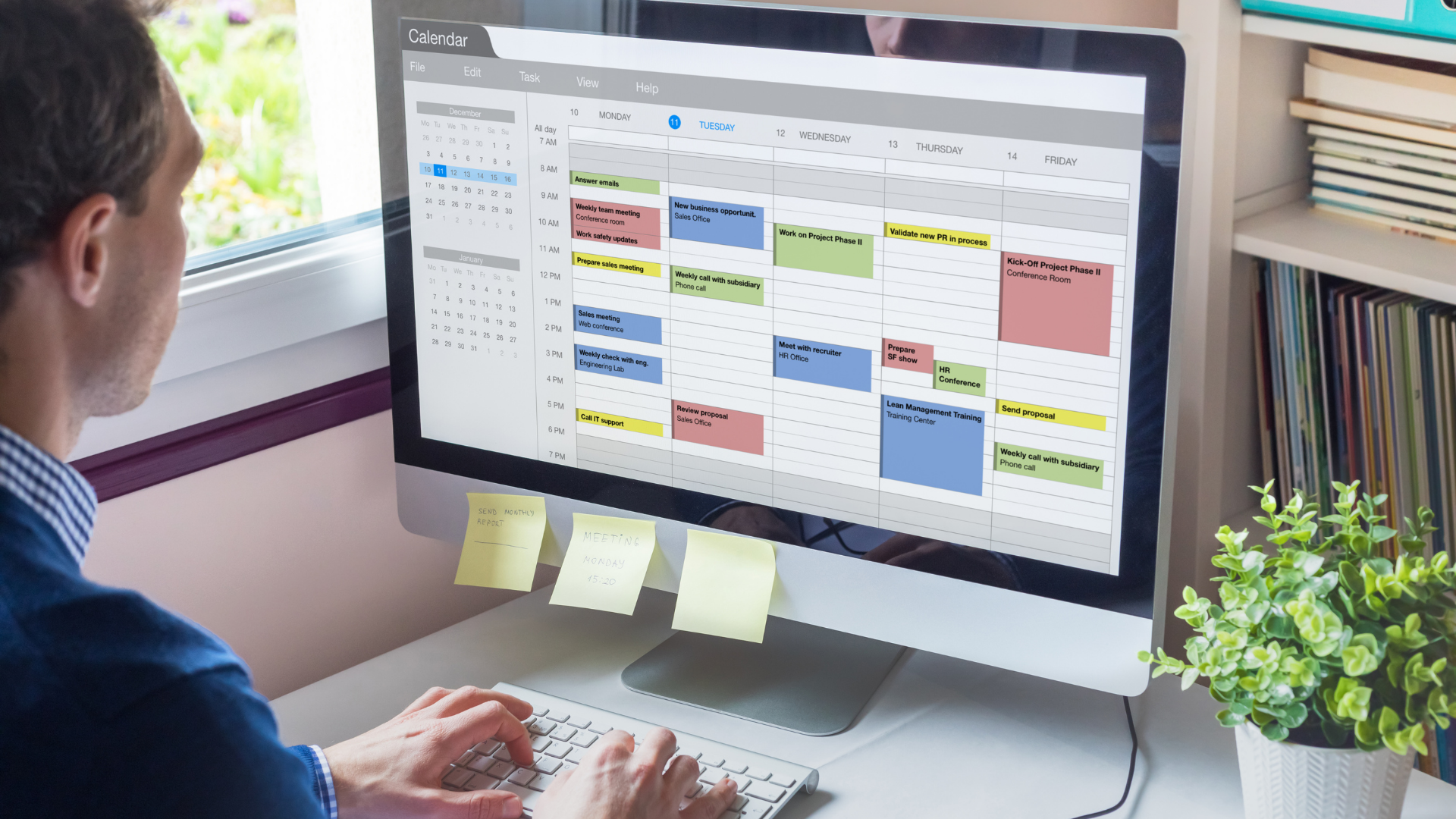What we have control of is our actions, behaviors, habits, and attitudes. Productivity begins with clarifying what we control and what we don’t, and then putting processes in place for those areas within our scope of control.
Minimizing Distraction
 Busting distractions is a great place to start on the journey for higher productivity. Research has shown that a distracted individual who bounces from one interruption to the next gets far less done than one who can focus.
Busting distractions is a great place to start on the journey for higher productivity. Research has shown that a distracted individual who bounces from one interruption to the next gets far less done than one who can focus.
In 1998 Linda Stone coined the phrase, “continuous partial attention.” She noted that as technology and teamwork become more prevalent in modern workplaces distraction increases. As proof, try counting the number of times external distractions from technology or other people take you off task in a typical workday. Now multiply that by the fact that it can take you want to focus on.
In addition to external distractions, we can even distract ourselves. One category of self-distraction is called “cycling thoughts” - tasks, to-dos, promises and ideas that are travelling around in our subconscious and unexpectedly pop back into our concision minds and interrupt us. If you’ve ever woken up in the middle of the night by a to-do or an idea, you know what I mean.
Here are some strategies to minimize distractions:
- Turn off as many alerts and notifications as possible, at least for part of each day.
- Book appointments with yourself to work on high priority tasks and projects. In environments with shared calendars, this stops people from booking into your “whitespace.”
- Have meeting rhythms with teammates and encourage everyone to batch their discussion items rather than interrupting each other whenever the need arises.
- Have a single, prioritized task list and work through it starting with the highest value tasks.
- Pay attention to your space – close the door, move items unrelated to the task at hand out of view, and be comfortable.
Clarifying Direction
My friend David Irvine reminds us that direction is more important than velocity. There is no greater waste of time than working on the wrong activities. And working on the wrong things faster is insanity.
Days that are unplanned will naturally get filled by other people’s urgencies, priorities, and meetings.
Ongoing planning ensures we stay pointed in the right direction:“Anything less than a conscious commitment to the important is an unconscious commitment to the unimportant.”
Stephen Covey
- Plan each day prior to starting the day. Ideally this is done the night before.
- Use longer-term goals as the measuring stick to evaluate possible tasks against one another. This is the essence of prioritization.
- Consider your personal high-energy times in the day and use these for your most important tasks.
- Interact with management and colleagues enough to ensure that your work is aligned to the team and organizational priorities while avoiding redundancies and duplication.
Slowing Down to Speed Up
In our quest for productivity, it’s easy to convince ourselves that we should just work harder and faster. As Greg McKeown told us on Unleashed, many leaders equate higher performance with higher inputs of time, energy and effort. In the short term this might work, but in the longer term it’s a recipe for burnout.
“I feel thin, sort of stretched, like butter scraped over too much bread”
Bilbo Baggins, Fellowship of the Ring by J.R.R. Tolkien
The phrase, “slowing down to speed up,” seems counter intuitive but is in fact the way forward if we are going to win the marathon:
- Taking care of yourself is part of your job, especially if you are a leader. Take time to stay fit, sleep well and recharge.
- Don’t overcommit – the art of prioritization is more about what you say NO to than what you say YES to.
- The most important work often requires deep thought and soak-time. Our brains need time to be creative, see patterns and solve difficult problems. Slow work is sometimes the highest value work.
Chaos and uncertainty are here to stay. Our value depends on our ability to be productive in these times, and by applying the techniques above in a disciplined way we have the best chance to be successful.
If you’d like to learn more about how to build a high-performance company, or other ways you can take the simpler path to creating a great business, connect with us.



 Various time-management techniques have evolved and are well known – Priority Management, Daytimer, Inbox Zero, Getting Things Done (GTD), Bullet Journaling and Productivity Ninja. Along with these approaches various productivity tools have become popular too – Basecamp, Todoist, Toodledo, Asana, MS Todo and a plethora of others.
Various time-management techniques have evolved and are well known – Priority Management, Daytimer, Inbox Zero, Getting Things Done (GTD), Bullet Journaling and Productivity Ninja. Along with these approaches various productivity tools have become popular too – Basecamp, Todoist, Toodledo, Asana, MS Todo and a plethora of others.